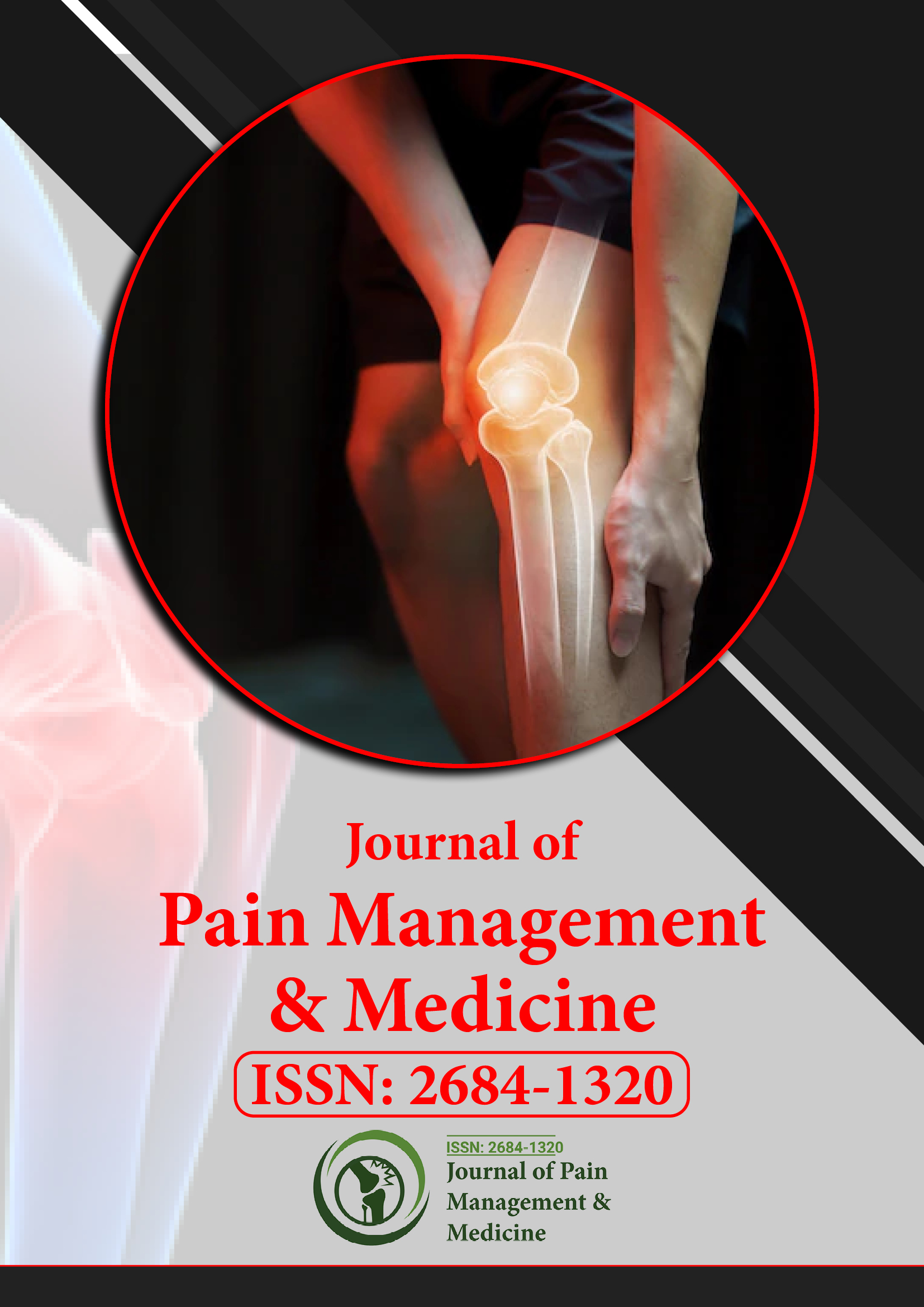Indexed In
- RefSeek
- Hamdard University
- EBSCO A-Z
- Publons
- Euro Pub
- Google Scholar
- Quality Open Access Market
Useful Links
Share This Page
Journal Flyer

Open Access Journals
- Agri and Aquaculture
- Biochemistry
- Bioinformatics & Systems Biology
- Business & Management
- Chemistry
- Clinical Sciences
- Engineering
- Food & Nutrition
- General Science
- Genetics & Molecular Biology
- Immunology & Microbiology
- Medical Sciences
- Neuroscience & Psychology
- Nursing & Health Care
- Pharmaceutical Sciences
Opinion Article - (2025) Volume 11, Issue 3
The Role of Muscle Hyperalgesia in Musculoskeletal Disorders
Elyse Cornett*Received: 30-Apr-2025, Manuscript No. JPMME-25-29868; Editor assigned: 02-May-2025, Pre QC No. JPMME-25-29868 (PQ); Reviewed: 16-May-2025, QC No. JPMME-25-29868; Revised: 23-May-2025, Manuscript No. JPMME-25-29868 (R); Published: 30-May-2025, DOI: 10.35248/2684-1320.25.11.334
Description
Muscle hyperalgesia refers to an increased sensitivity to painful stimuli arising from muscle tissue. Unlike normal muscle soreness following exertion, hyperalgesia represents an exaggerated pain response that often reflects underlying pathological processes. It is frequently observed in musculoskeletal pain syndromes, neuropathic conditions, and chronic widespread pain disorders such as fibromyalgia. The phenomenon of muscle hyperalgesia has gained increasing attention in pain research and clinical practice because it provides insight into mechanisms of central and peripheral sensitization.
Muscle tissue contains a dense network of nociceptors that respond to mechanical, chemical, and thermal stimuli. Under normal conditions, these nociceptors transmit signals that are perceived as pain only when a noxious threshold is reached. In hyperalgesia, this threshold is lowered, and the intensity of pain is amplified. Patients often report deep, aching, or burning pain that may be spontaneous or triggered by minor pressure, stretching, or movement. This altered pain processing contributes significantly to functional limitations and reduced quality of life.
The pathophysiology of muscle hyperalgesia is multifactorial. Peripheral sensitization, involving increased excitability of nociceptors due to inflammatory mediators such as prostaglandins, bradykinin, and cytokines, plays an important role. Central sensitization, where the spinal cord and brain amplify pain signals, further contributes to sustained hyperalgesia. Abnormalities in descending inhibitory pathways, which normally regulate pain perception, are also implicated. In some chronic pain conditions, genetic and psychosocial factors may predispose individuals to heightened sensitivity.
Muscle hyperalgesia is commonly seen in conditions such as delayed-onset muscle soreness, myofascial pain syndrome, chronic low back pain, tension-type headache, and fibromyalgia. In sports medicine, hyperalgesia can complicate recovery from overuse injuries or acute muscle strain, leading to prolonged disability. In neurological conditions such as neuropathic pain, hyperalgesia may coexist with allodynia, where normally nonpainful stimuli are perceived as painful. Identifying muscle hyperalgesia is therefore critical in differentiating between mechanical injury and central pain disorders.
Assessment of muscle hyperalgesia is performed using clinical evaluation and quantitative sensory testing. Palpation of muscles can reveal tender points or trigger points, areas that elicit disproportionate pain when stimulated. Pressure pain threshold measurement using algometry provides objective assessment of sensitivity. Functional assessments, including range of motion and strength testing, help determine the degree of impairment. Patient-reported outcome measures, such as pain intensity scales and quality-of-life questionnaires, complement clinical findings.
Management of muscle hyperalgesia requires a multimodal approach. Pharmacological options include Nonsteroidal Anti-Inflammatory Drugs (NSAIDs) for reducing peripheral inflammation, muscle relaxants, and neuropathic agents such as gabapentinoids or antidepressants in cases involving central sensitization. Topical treatments, including lidocaine patches or capsaicin, may offer localized relief. In chronic conditions, long-term opioid therapy is generally avoided due to concerns about tolerance and hyperalgesia induced by opioid use itself.
Physical therapy is a cornerstone of treatment, aiming to restore normal muscle function and reduce sensitivity. Techniques such as stretching, strengthening, massage, and myofascial release are beneficial. Graded exercise therapy helps recondition muscles while minimizing exacerbation of pain. Additionally, modalities such as Transcutaneous Electrical Nerve Stimulation (TENS), ultrasound therapy, and dry needling are sometimes employed to modulate pain perception.
In conclusion, muscle hyperalgesia represents an important dimension of musculoskeletal and chronic pain conditions. Its presence indicates heightened sensitivity of pain pathways and often reflects both peripheral and central mechanisms. Effective management requires a combination of pharmacological, physical, and psychological interventions tailored to individual patient needs. As research continues to advance, improved strategies for diagnosis and treatment of muscle hyperalgesia hold promise for enhancing patient outcomes and quality of life.
Citation: Cornett E (2025). The Role of Muscle Hyperalgesia in Musculoskeletal Disorders. J Pain Manage Med. 11:334.
Copyright: © 2025 Cornett E. This is an open-access article distributed under the terms of the Creative Commons Attribution License, which permits unrestricted use, distribution, and reproduction in any medium, provided the original author and source are credited.

